From the Knees of my Nose to the Belly of my Toes by Alex Chinneck
The facade of this house in the English seaside town of Margate appears to slump down into the front yard (+ movie).
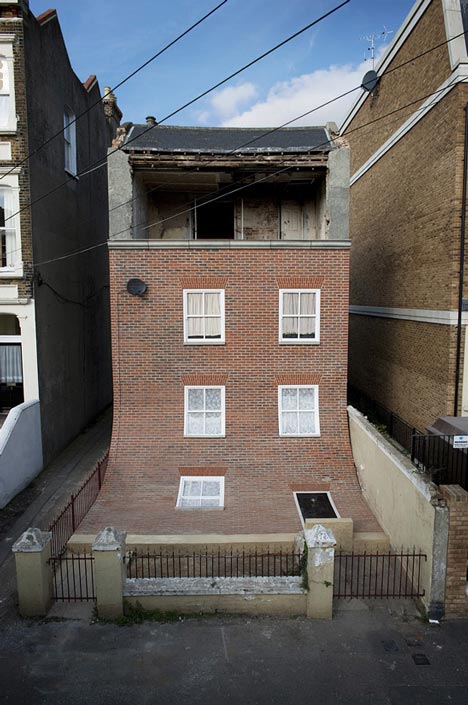
British designer Alex Chinneck created the installation - called From the Knees of my Nose to the Belly of my Toes - by removing the facade of a detached four-storey house that had been derelict for eleven years and replacing it with a brand new frontage that leaves the crumbling top storey exposed, then curves outwards so the bottom section lies flat in front of the house.
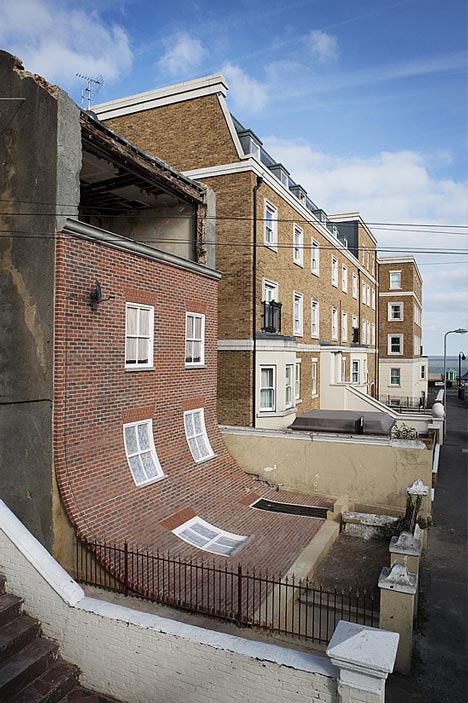
"I just feel this incredible desire to create spectacles," Chinneck told Dezeen. "I wanted to create something that used the simple pleasures of humour, illusion and theatre to create an artwork that can be understood and enjoyed by any onlooker."
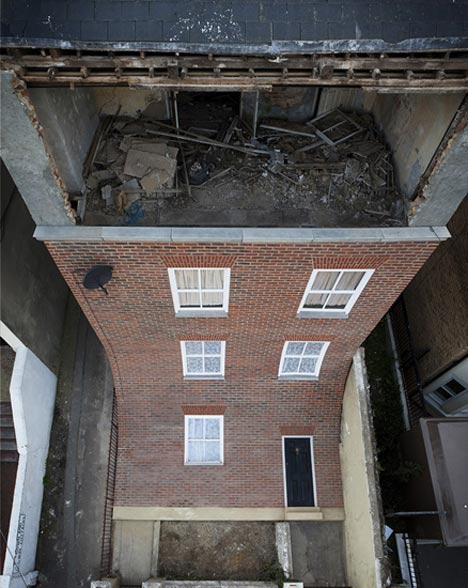
Located on Godwin Road in the Cliftonville area of the town, the house had been acquired by the local council and earmarked for social housing, but nothing was due to happen to it for a year and the structure was in a dilapidated state. "There were barely any floorboards, it's very fire-damaged at the back and water-damaged at the front, and had fallen into ruin," said the designer.
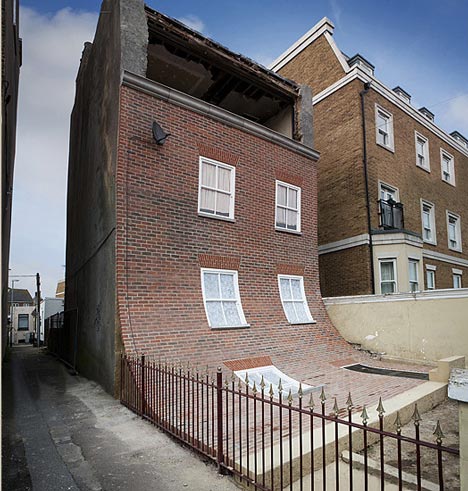
His installation reveals this dilapidated interior where the smart new facade falls away from the top floor. "I increasingly like that idea of exposing the truth and the notion of superficiality," he explained. "I didn't go into the project with that idea, but as it evolved I started to like that."
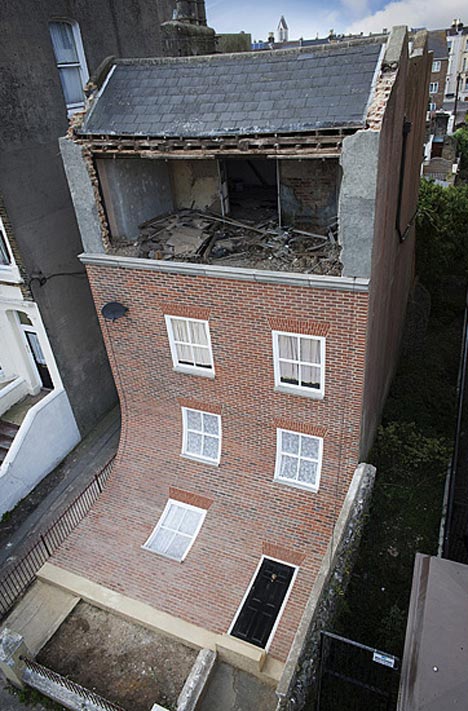
Cliftonville is a district of Margate that used to be affluent, but like many seaside towns in the UK it has suffered with the changing patterns of holidaymakers. "It has social issues, it struggles with high levels of crime and the grand architecture has fallen into a fairly fatigued state," said Chinneck.
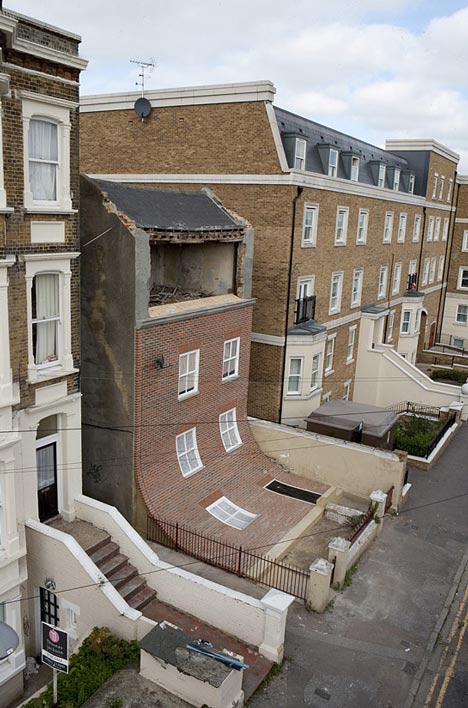
In addition to causing delight when residents happen upon his intervention, the designer hopes to will draw visitors up the hill from the centre of Margate, where high-profile projects like the Turner Contemporary gallery by David Chipperfield are using culture as a tool for regeneration.
"Cliftonville is a very poor area referred to as being 'up the hill', and the culture and the arrival of artists hasn't quite reached up the hill yet," he said. "I was drawn to Cliftonville because it's an area where the culture hasn't reached and I think public art too often forgets its responsibility to the public."
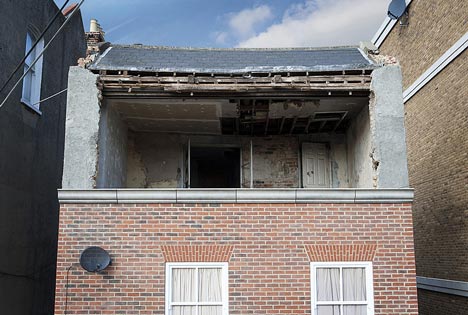
"I like the idea of surprise," he added. "I never put signs on my work and I never give it any labels, so it does have this sense of mystery. It's positioned in a way that you don't see the artwork as you approach from either direction - you just see the hole in the top at first, so it's a series of discoveries and you have to walk around it."
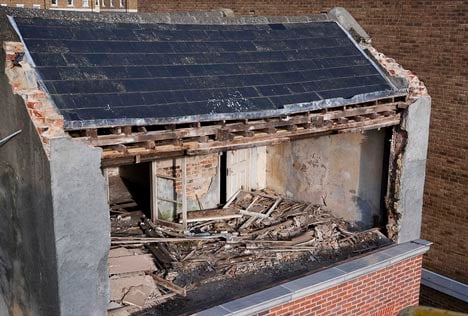
The designer initiated the project himself and spent twelve months convincing companies to help him realise the artwork. Everything was donated by ten different companies except the labour, which was done at cost and paid for buy the Arts Council. The installation itself came together in just six weeks by assembling prefabricated panels.
The artwork will remain in place for a year, before the building is converted for use as housing.
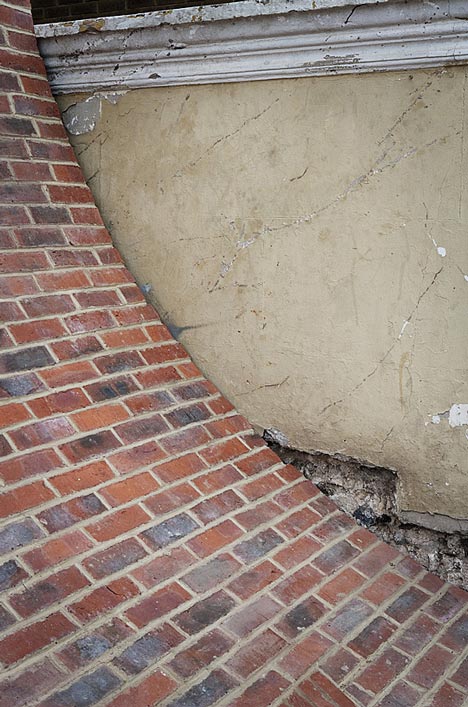
Alex Chinneck's work has often featured dilapidated buildings - past projects Dezeen has reported on include a factory near the Olympic park in east London with 312 identically smashed windows and a melting brick wall.
"I like the contradiction of taking a subject that's dark or depressing or bleak, something like dereliction which suggests something quite negative socially but also aesthetically, and delivering a playful experience within that context," he explained. "I don't think it's a negative comment on society, it's just trying to give society a positive experience."
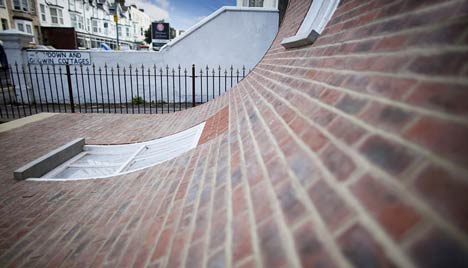
If you like this, check out the Dalston House in east London, where a mirror reflects the facade of a house lying on the ground to give the illusion that visitors are standing on walls and window ledges. There's also a student housing block hidden behind the facade of a historic brick warehouse, which has been named Britain's worst building of the year.

More design by Alex Chinneck »
More installations »
Photographs are by Stephen O'Flaherty and the film is by Hazeleigh Prebble.
Here's some more information from Alex Chinneck:
From the knees of my nose to the belly of my toes
British artist and designer Alex Chinneck has completed construction of his most ambitious installation to date after peeling the front of a four-storey house in Margate away from the rest of the building. As curving bricks, windows and doors slide into the front garden of a property that has been vacant for eleven years its upper interiors are revealed to the public below.

Thanet District Council gave the artist permission to use an empty property on Godwin Road in the Cliftonville area to create the artwork. Cliftonville is a district striking for both the grandeur of its architecture and for the challenging social issues it has faced in the last thirty years. Together with Margate’s widely discussed use of culture as a tool for regeneration, this provides an ideal context for the piece.
The completion of construction follows a twelve-month campaign undertaken by the artist to realise his self-initiated £100,000 project. Ten leading companies across British industry donated all the materials, manufacturing capabilities and professional services required to build the sliding facade.
Alex Chinneck’s practice playfully warps the everyday world around us, presenting surreal spectacles in the places we expect to find something familiar. At 28 years old ‘From the knees of my nose to the belly of toes’ is his boldest project yet as he continues to theatrically combine art and architecture in physically amazing ways. This project follows his acclaimed 2012 installation ‘Telling the truth through false teeth’, in which the artist installed 1248 pieces of glass across the façade of a factory in Hackney to create the illusion that its 312 windows had been identically smashed and cracked.
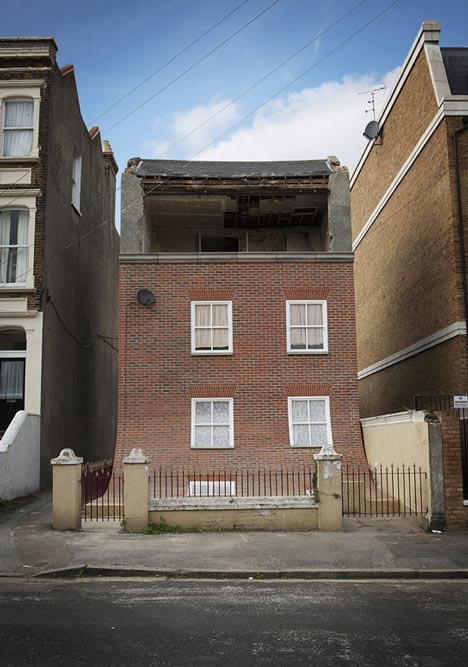
Alex Chinneck is a London based artist and designer. He is the founder of The Sculpture House, a member of the Royal British Society of Sculptors and a graduate of Chelsea College of Art and Design.
This project has been made possible with support from the Arts Council England, Margate Arts Creativity Heritage, Thanet District Council, Ibstock Brick, Smith and Wallwork Engineers, Norbord, Macrolux, WW Martin, Urban Surface Protection, Jewson, RJ Fixings, Resort Studios, Cook Fabrications, the Brick Development Association, and All Access Scaffolding.
Location: 1 Godwin Road, Cliftonville, Margate, CT9 2HA
Dates: 1st of October 2013 - October 2014